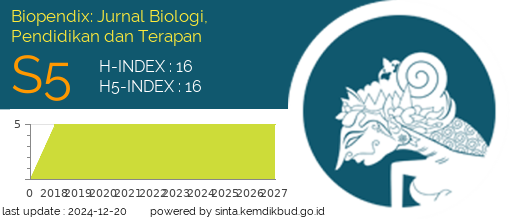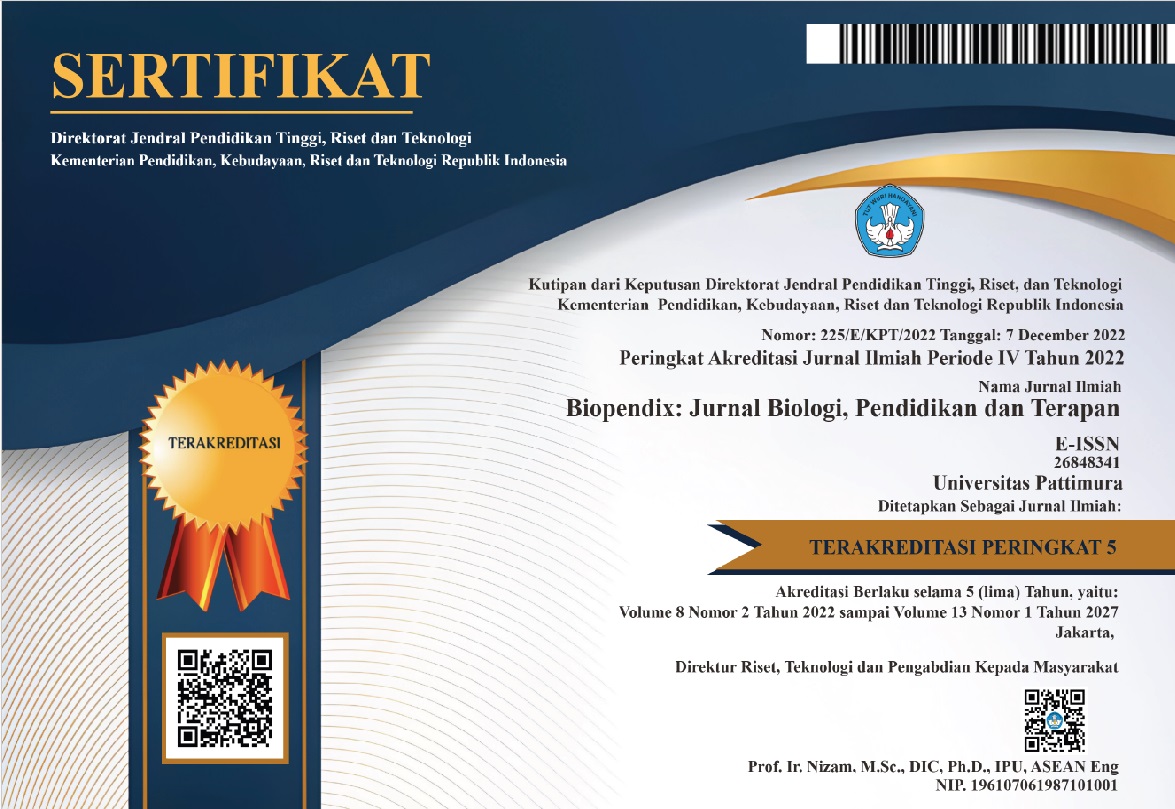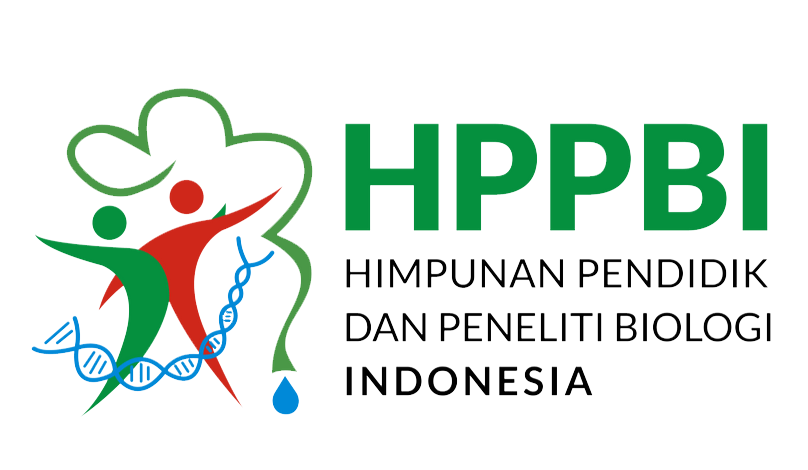PENGARUH KONSENTRASI GARAM DAN WAKTU PERENDAMAN TERHADAP CITA RASA IKAN KAWALINYA (SELAR LEPTOLEPIS) ASIN KERING
Abstract
Background: Fish kawalinya (Selar leptolepis) is one type of fish that has a high enough economic value caught in the waters of Maluku. From the results of fish kawalinya (Selar leptolpis) more than half consumed in fresh form. The process of salting fish until now has not been handled properly, so the fish can change, whether it changes the physical and chemical properties caused by microorganisms before the salting process is complete.
Method: The object of this research is fresh fish that is still fresh as much as 27 tails. Stage of dried salted fish dried fish then divided into 4 (four) that is, prepare fish meat according to concentration 20%, 40% and 60%. The next step is soaking in saline solution for 4 hours, 6 hours and 8 hours, slicing salt solution and drying for 2-3 days using sunlight. Observations included the appearance, smell and taste of dried salted fish. The data obtained were analyzed statistically descriptive. Descriptive statistics are used to assess organoleptics based on panelists using certain scores for categories of sighting, smell and taste.
Results: The results showed that Salt Concentration and soaking time affected the dried flavor of salted fish in their kawalinya.
Conclusion: The best salt concentration and storage time of salt dried fish taste was salt concentration of 40%, with soaking time of 4 hours and 6 hours, followed by salt concentration of 60%, with immersion time of 4 hours and 6 hours and concentration of 20 % with soaking time of 4 hours and 6 hours
Downloads
Authors who publish with BIOPENDIX: Jurnal Biologi, Pendidikan dan Terapan agree to the following terms:
- Authors retain copyright and grant the journal right of first publication with the work simultaneously licensed under Creative Commons Atribution-ShareAlike 4.0 International License (CC BY-SA 4.0) that allows others to share the work with an acknowledgment of the work's authorship and initial publication in this journal.
- Authors are able to enter into separate, additional contractual arrangements for the non-exclusive distribution of the journal's published version of the work (e.g., post it to an institutional repository or publish it in a book), with an acknowledgment of its initial publication in this journal.
- Authors are permitted and encouraged to post their work online (e.g., in institutional repositories or on their website) prior to and during the submission process, as it can lead to productive exchanges, as well as earlier and greater citation of published work.





 2
2







